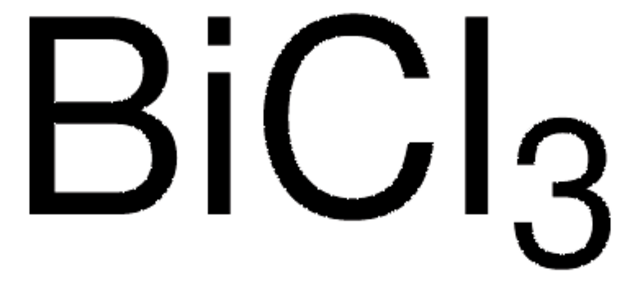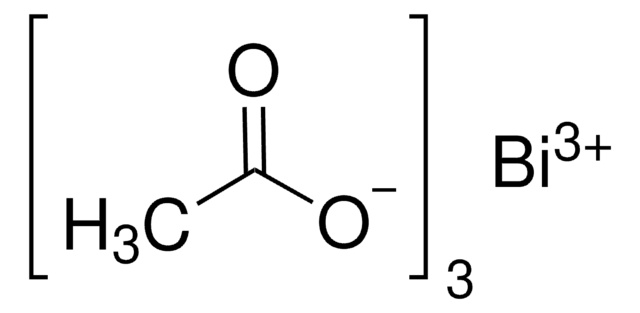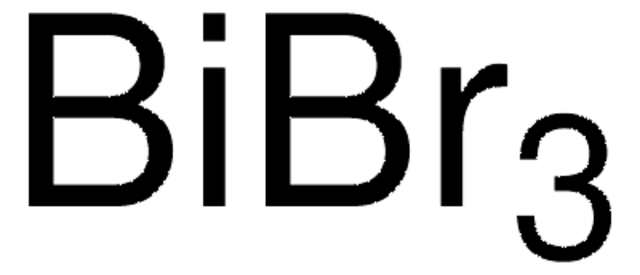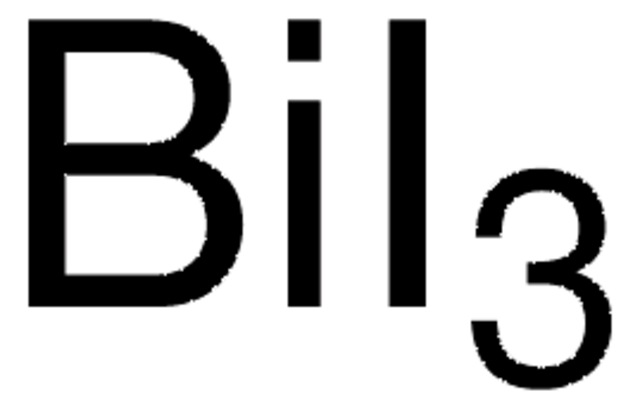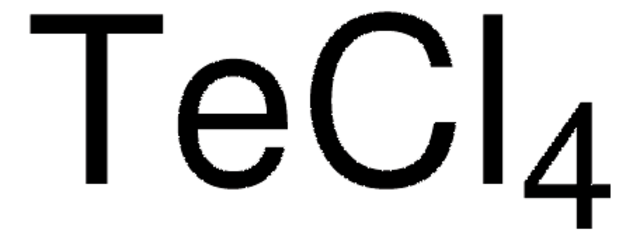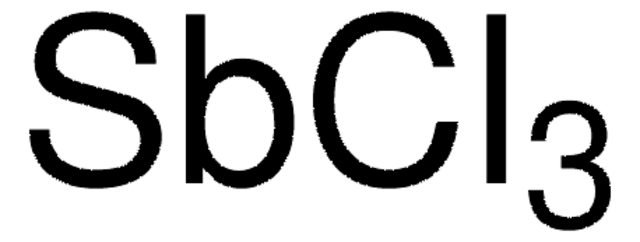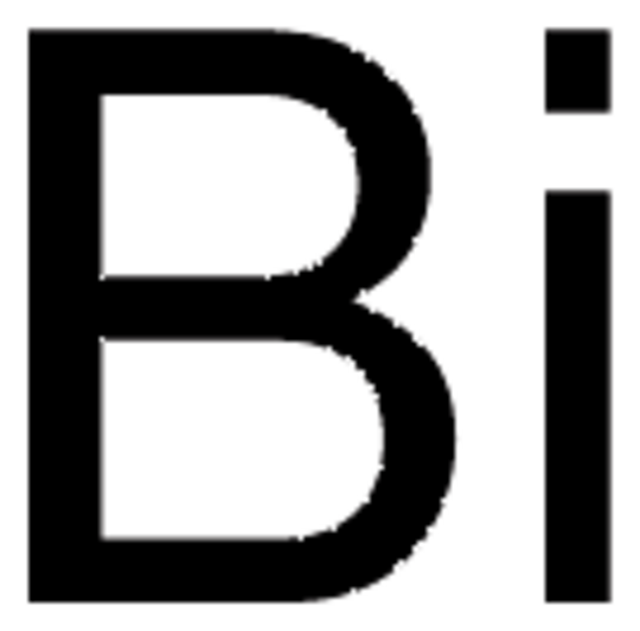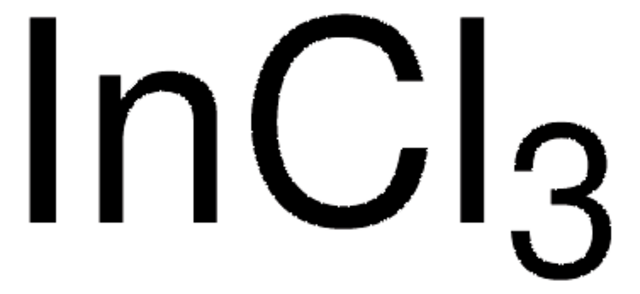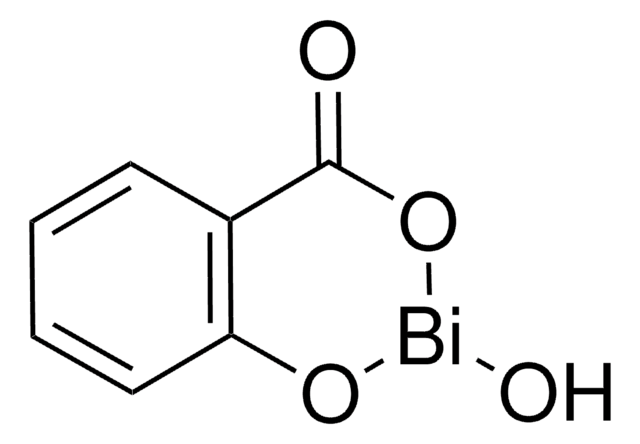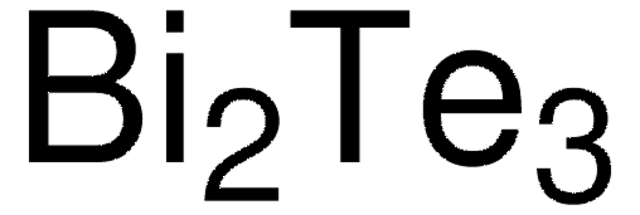254142
Bismuth(III) chloride
99.99% trace metals basis
Synonyme(s) :
Bismuth trichloride, Trichlorobismuth
About This Item
Produits recommandés
Qualité
for analytical purposes
Niveau de qualité
Essai
99.99% trace metals basis
Forme
solid
Pertinence de la réaction
reagent type: catalyst
core: bismuth
Impuretés
≤150.0 ppm Trace Metal Analysis
pb
447 °C (lit.)
Pf
230-232 °C (lit.)
Chaîne SMILES
Cl[Bi](Cl)Cl
InChI
1S/Bi.3ClH/h;3*1H/q+3;;;/p-3
Clé InChI
JHXKRIRFYBPWGE-UHFFFAOYSA-K
Vous recherchez des produits similaires ? Visite Guide de comparaison des produits
Catégories apparentées
Description générale
Application
- As a precursor to prepare polyaniline and bismuth(III) telluride nanohybrids with high thermoelectric performance.
- As a starting material to synthesize visible light absorbing double perovskite semiconductors, such as Cs2AgBiBr6 and Cs2AgBiCl6, eco-friendly alternative to the lead halide perovskites.
- To form a protective layer on anode materials.
- Chalcones by Claisen–Schmidt reaction under solvent-free conditions.
- One-pot three-component synthesis of Propargylamines.
- Coumarins via ultrasound‐assisted Pechmann condensation of phenols with β‐ketoesters.
Mention d'avertissement
Warning
Mentions de danger
Conseils de prudence
Classification des risques
Eye Irrit. 2 - Skin Irrit. 2
Code de la classe de stockage
11 - Combustible Solids
Classe de danger pour l'eau (WGK)
WGK 2
Point d'éclair (°F)
Not applicable
Point d'éclair (°C)
Not applicable
Équipement de protection individuelle
dust mask type N95 (US), Eyeshields, Gloves
Faites votre choix parmi les versions les plus récentes :
Déjà en possession de ce produit ?
Retrouvez la documentation relative aux produits que vous avez récemment achetés dans la Bibliothèque de documents.
Les clients ont également consulté
Articles
Thermoelectric Performance of Perovskite-type Oxide Materials
The prevailing strategies for heat and electric-power production that rely on fossil and fission fuels are having a negative impact on the environment and on our living conditions.
Global Trade Item Number
| Référence | GTIN |
|---|---|
| 254142-125G | |
| 254142-25G | 4061825983769 |
Notre équipe de scientifiques dispose d'une expérience dans tous les secteurs de la recherche, notamment en sciences de la vie, science des matériaux, synthèse chimique, chromatographie, analyse et dans de nombreux autres domaines..
Contacter notre Service technique